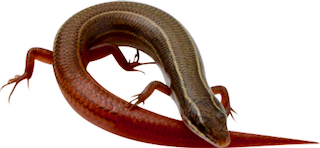Research
Predicting the future with pawpaw
Investigating the impact of long-term climate stability on population dynamics of two Brazilian palm trees (Syagrus sp.)
We have evidence that climate change in already altering natural systems: multiple species have experienced range-shifts poleward or up-slope, while others show shifts in their phenology, and entire communities are losing or gaining members as species ranges shift. Although we can see impacts occurring now, it remains difficult to make predictions of future responses, due to uncertainty at multiple levels. One of the most powerful ways to inform predictions is to examine species responses to rapid climate change in the past. Genetic data coupled with statistical analyses form an ideal framework to make inferences of past demographic change. I propose to study the population genetics of two palm tree species in the genus Syagrus to do this. We have evidence to suggest that these two species have experienced different regimes of climatic stability over the past 21,000 years, and I am interested in understanding how those differences impact their historical and current demography. Specifically, I am using genome-wide data from RADseq to infer their current population structure and diversity, as well as historical changes to population size and connectivity.
Past Reseach Projects
Phylogeography and conservation genetics of Mole Skinks (Plestiodon egregius)
 My MS research investigated the phylogeographic patterns of divergence in a lizard of the southeastern United States, Mole Skinks (Plestiodon egregius). Mole skinks are semi-fossorial lizards endemic to the southeastern US and have low dispersal rates, which makes them a perfect model organism to use genetic markers to study historical dispersal patterns. As part of this project I was involved in the USFWS working groups on the status of two of subspecies of P. egregius.
My MS research investigated the phylogeographic patterns of divergence in a lizard of the southeastern United States, Mole Skinks (Plestiodon egregius). Mole skinks are semi-fossorial lizards endemic to the southeastern US and have low dispersal rates, which makes them a perfect model organism to use genetic markers to study historical dispersal patterns. As part of this project I was involved in the USFWS working groups on the status of two of subspecies of P. egregius.
Nerodia clarkii species group systematics
Population genetics of oysters in Apalachicola Bay, FL
The american oyster, Crassostrea virginica, exist in two phenotypes across their range. Subtidal oysters, or oysters that are always underwater, and intertidal oyster, those which are exposed to air for part of the tidal regime. Intertidal oysters are typically shorter and have thinner shells than subtidal individuals. These two phenotypes do not occur in the same site over most of the range of the species.